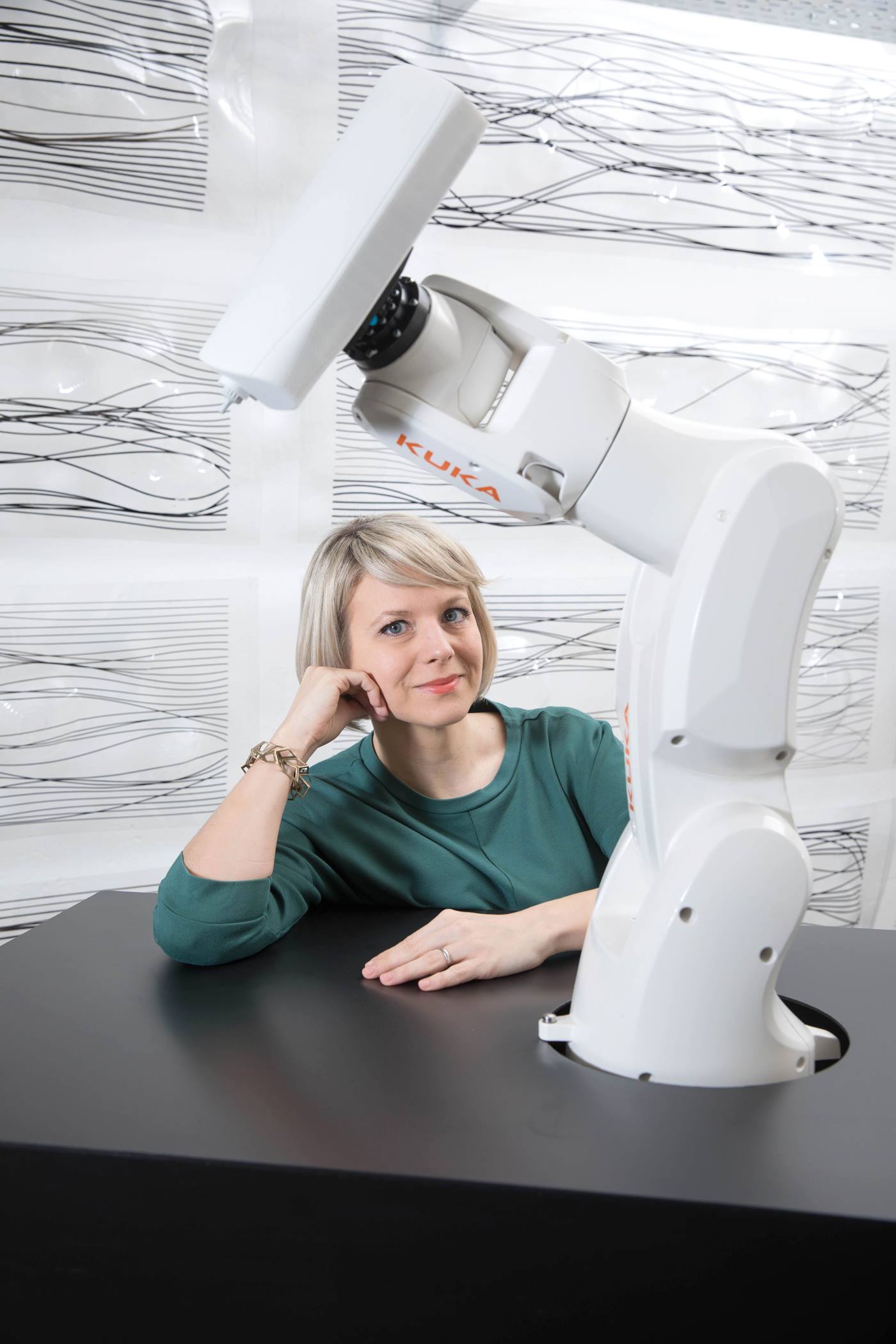
»The robot should be a likeable tool«
Martina Mara is Professor of Robotic Psychology at the Johannes Kepler University in Linz, Austria. She deals with questions of how robots are perceived and under what conditions people enjoy working with robots and use them effectively.
Reading Time: 2 min.
In this interview, Martina Mara outlines what tasks robots could assume in the foreseeable future, how people’s apprehension regarding mechanical assistants can be allayed and in which cases robotic ‘colleagues’ are regarded as troublesome.
How long will it be before such sophisticated robots as the famous C-3PO from the ‘Star Wars’ films will be assisting us in our everyday lives?
Prof. Martina Mara: (Laughs) ‘When?’ is always a difficult question to answer. In hindsight, everyone is almost always wrong! It will certainly still be a very long time, however, before robots have the properties of the neurotic C-3PO. There might never be such robots. In current research, there are no signs indicating that machines with consciousness or real emotions could ever be manufactured. It is, of course, possible to simulate these things though. There are many applications in which robots imitate human-like behavior. This naturally has an effect on people.

Mara: It is virtually impossible to teach robots human capabilities such as empathic communication, creativity when dealing with new concepts, or irony. It is also difficult to imitate various motor skills. Walking upright along a busy shopping street, for example, or the dexterity involved in handling different materials such as glass or paper. However, robots have their strengths in many other areas. Besides, there is no real need to replicate what humans can already do very well.
Potential for mobile transport robots
There is currently much discussion about how robots could provide humans with household assistance, for example. What potential applications do you see for service robotics?
Mara: In the short term, I see further development of cleaning and lawn-mowing robots and also simple social robots for household use that, when requested, can take photos, play games or search for information on the web, for example. Essentially, an advanced form of voice-controlled systems. Furthermore, there is certainly potential for mobile transport robots that can fetch objects or possibly even deliver packages.
And in the medium term?
Mara: In the medium term, we need to ask ourselves the following question: what do we actually want to automate? What should humans do and what tasks should be taken over by robots? It can make sense to transfer tasks to robots and artificial intelligence so that we have more time for other things. We benefit most when robots collaborate with us on a complementary basis.
Humans and robots collaborating directly. Can that work out well?
Mara: We know that people often respond skeptically to robots if their appearance or behavior becomes too human-like. That triggers unease. While this is not generally a problem in the case of collaborative robots in the workplace, more should nevertheless be done here to address the different needs of different people. The requirements of an expert differ from those of an untrained layman. One person might prefer a more active interaction partner, while another might get along better with a more restrained robot that does not present the next workpiece until the user has issued a command. Custom-tailored robot behavior that can adapt to these different needs may become possible in the future.
Can you provide an example of the sensible use of service Robotics?
Mara: In my opinion, it makes little sense entrusting robots with the social /emotional supervision of children or the elderly. Instead, they could provide mechanical assistance in patient care, for example. I am thinking of mobile platforms that could transport bed linens or even a robotic exoskeleton that could be worn by caregivers to support their backs when lifting. The robot could save staff time and relieve their physical burden. It would not be a rival, but – ideally – a likeable tool.
Robots must become faster
What challenges does this still entail?
Mara: In the future, more and more people who are not robot experts will have encounters with robots. For this reason, the technology needs to be optimized, for example with regard to the fluency of communication. Currently, this is often still sluggish, which can lead to uncertainties in interaction. It is not always clear whether the robot has already completely executed a task or whether it is still waiting for input. We know from tests that humans tend to terminate the cooperation quickly in such cases. Robots must therefore become faster and their states and targets must become easier to understand.
A personal question, if we may: do you use service robots yourself?
Mara: I would like to have a window-cleaning robot (laughs). All joking aside, I often test various prototypes, but am still waiting for the ultimate solution.
The interview with Prof. Mara was published in „the o.i.“ 2019
Next article










